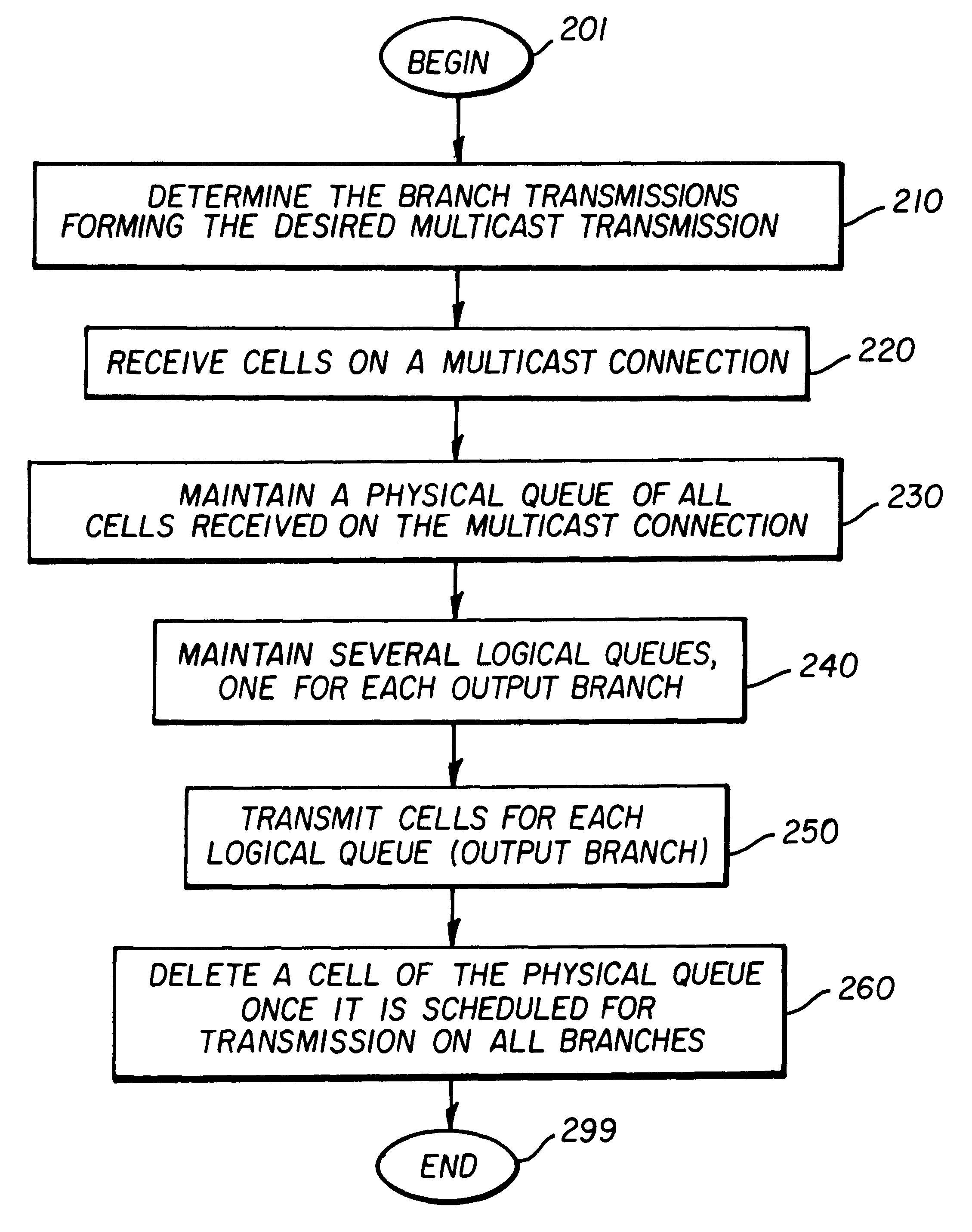Queue management with support for multicasts in an asynchronous transfer mode (ATM) switch
a transfer mode and multicast technology, applied in the field of communication networks, can solve the problems of inability to provide more services, inefficiency in the usage of the overall bandwidth, and degradation of the aggregate service level
- Summary
- Abstract
- Description
- Claims
- Application Information
AI Technical Summary
Benefits of technology
Problems solved by technology
Method used
Image
Examples
example implementation
4. Example Implementation of an ATM Switch According to the Present Invention
For an understanding of the architecture and operation of the implementation, it is helpful to know that basic to ATM architecture is that each cell contains 53 bytes of data, of which 5 bytes are used as header and 48 bytes are used as payload (actual application data using ATM backbone). The header contains virtual path identifier (VPI) and virtual channel identifier (VCI) fields. These fields, along with the port on which a cell is received, are used identify the branch(es) to which the cell relates to. For a detailed understanding of ATM, the reader is referred to a book entitled, "ATM: Theory and Application", (ISBN: 0070603626, Published September 1994 by McGraw-Hill Series on Computer Communications), by David E. McDysan and Darren L. Spohn, which is incorporated in its entirety herewith. The relationship between connections and VPI / VCI values is determined during the connection setup process. The ma...
example scheme
5. Example Scheme for Maintaining and Processing Logical Queues
An example scheme including data structures (stored in scheduler memory 431) used by queue manager 430 is described with reference to FIG. 5. Physical queue pointer table 510 is shown with pointer locations 510-A through 510-L for illustration purpose. In reality, physical queue pointers 520 typically include a number of locations equal to the number of cells that may be stored in memory 490. The pointers in physical queue pointers 520 identify the cells stored in memory 490 and the order (cell order) in which they are received. This is illustrated with an example in FIG. 5, in which storage locations 520-A through 520-L represent memory locations in memory 490 where cell data is stored. Location 510-A points to location 510-C, which in turn points to 510-D, which points to location 510-L, which points to location 510-H. Thus, the cell data stored in corresponding memory storage locations 520-A, 520-C, 520-D, 520-L and 5...
PUM
 Login to View More
Login to View More Abstract
Description
Claims
Application Information
 Login to View More
Login to View More - R&D
- Intellectual Property
- Life Sciences
- Materials
- Tech Scout
- Unparalleled Data Quality
- Higher Quality Content
- 60% Fewer Hallucinations
Browse by: Latest US Patents, China's latest patents, Technical Efficacy Thesaurus, Application Domain, Technology Topic, Popular Technical Reports.
© 2025 PatSnap. All rights reserved.Legal|Privacy policy|Modern Slavery Act Transparency Statement|Sitemap|About US| Contact US: help@patsnap.com



